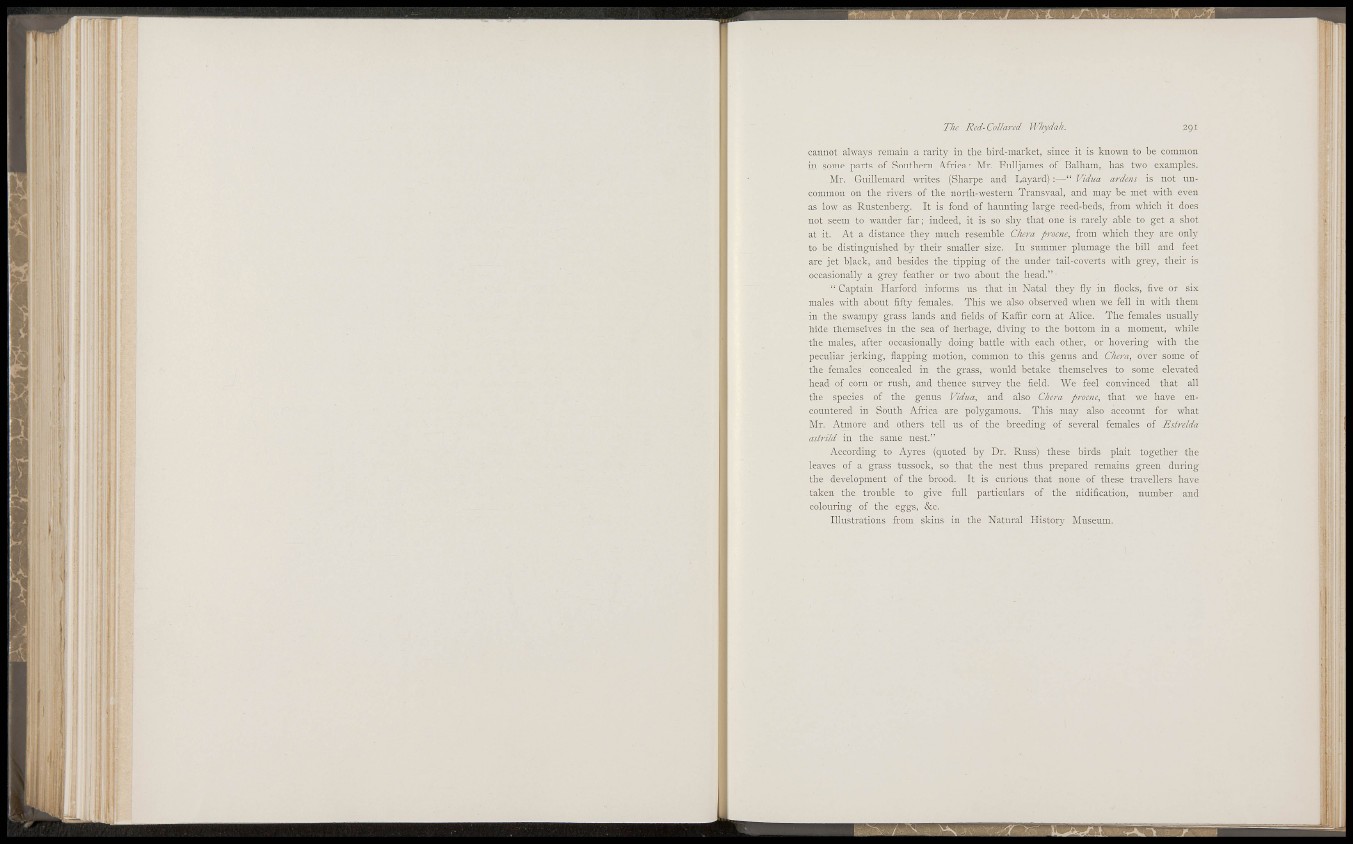
m
J-i'? i
'•Mil
The Red-Collared Whydah. 2 9 1
cannot always remain a rarit}' in tlie bird-market, since it is known to be common
in some parts of Sonthern Africa: Mr. Fnlljames of Balham, has two examples.
Mr. Giiillemarcl writes (Sliarpe and Layard) :—" Vidua ardens is not nncommou
on the rivers of the north-western Transvaal, and may be met with even
as low as Rustenberg. It is fond of hannting large reed-beds, from which it does
not seem to wander far; indeed, it is so shy that one is rarely able to get a shot
at it. At a distance they much resemble Chera proctie, from which they are only
to be distinguished by their smaller size. In summer plumage the bill and feet
are jet black, and besides the tipping of the under tail-coverts with grey, their is
occasionally a grey feather or two about the head."
" Captain Harford informs us that in Natal they fly in flocks, five or six
males with about iift3' females. This we also obseiwed when we fell in with them
in the swampy grass lands and fields of Kaffir com at Alice. The females usually
hide themselves in the sea of herbage, diving to the bottom in a moment, while
the males, after occasionally doing battle with each other, or hovering with the
peculiar jerking, flapping motion, common to this genus and Chera, over some of
the females concealed in the grass, would betake themselves to some elevated
head of corn or rtish, and thence survey the field. We feel convinced that all
the species of the genus Vidua, and also Chei-a procnc, that we have encountered
in South Africa are polygamous. This may also account for what
Mr. Atmore and others tell us of the breeding of several females of Estrelda
astrild in the same nest."
According to Ayres (quoted by Dr. Russ) these birds plait together the
leaves of a grass tussock, so that the nest thus prepared remains green during
the development of the brood. It is curious that none of these travellers have
taken the trouble to give full particulars of the nidification, number and
colouring of the eggs, &c.
Illustrations from skins in the Natural History Museum.